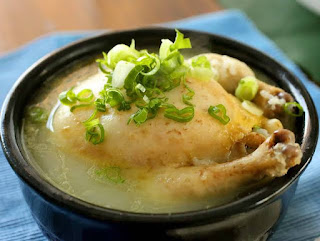KOREAN FOODS
1. Kimchi (Spicy Fermented Vegetables)
Kimchi is the first thing that comes to our mind on the mention of Korean food. It is the best way to get familiar with the Korean Cuisine. Consider it a spicy, crunchy salad made up from fermented vegetables with cabbage as its main ingredient.
It has high nutritional value, fiber content, and low-calorie count. The quintessential Korean food item, Korean dining is incomplete without this delectable side dish.
2. Gimbap 김밥 (Seaweed Wrapped Rolls)
Gimbap (also spelt kimbap) is extremely versatile and can be bought as a snack from a convenience store, or the main part of a meal in a traditional Korean restaurant.
This simple dish is actually one of the most popular traditional Korean dishes. I personally love gimbap as it is light, healthy, and comes in a range of mouth-watering fillings, such as cream cheese, bulgogi (fried beef), lobster, and lots more.
This is a great meal option for those who want to cut their costs while travelling to Korea. It’s also great when you want to go hiking and need to pack a filling snack for the journey.
3. Tteokbokki 떡볶이 (Spicy Stir Fried Rice Cakes)
Tteokbokki is a blend of steamed and sliced rice cakes (tteok 떡), fish cakes (odeng 오뎅), and scallions in a sweet and spicy sauce with plenty of chilli paste. If you’re eating in a restaurant, then add in some cheese and noodles for a filling meal.
This is one of the traditional Korean dishes that you shouldn’t pass up if you’re exploring traditional markets in Korea. Best eaten fresh from the market vendors, this spicy, salty mishmash of classic Korean ingredients is perfect as a snack or meal.
As you can tell from the red colour, it’s going to be spicy! Spiciness and the ingredients in the sauce can vary between vendors – everyone has their own secret recipe. Try it more than once and see which is the best.
4. Bibimbap 비빔밥 (Mixed Rice With Vegetables)
Literally meaning ‘mixed rice’, bibimbap is a fun, healthy jumble of vegetables, rice, chilli paste, and is topped off with a fried egg. Take all the ingredients and mash it together yourself. Add as much gochujang 고추장 (chilli paste) as you can handle.
Bibimbap is served either cold, in a metal bowl, or heated in a hot stone bowl (dolsot bibimbap 돌솥비빔밥). The hot version is the best version in my opinion as the egg and rice stick together and cook on the hot stone.
If you’re visiting Jeonju, then make sure you try bibimbap there as they have their own version called Jeonju-bibimbap and it’s arguably one of the best.
5. Samgyetang 삼계탕 (Ginseng Chicken Soup)
Samgyetang, a meal in a bowl, contains a whole small chicken packed with rice, garlic, jujube, and ginseng. The thick soup absorbs all of this whilst cooking, leaving a soft, tender chicken and an aromatic, hearty broth. Perfect!
Ironically, this hot, healthy, and delicious ginseng chicken soup is most popular during summer. Koreans have a saying that you should fight heat with heat, meaning that you should eat hot food when it’s hot outside. As strange as it sounds, it actually works.
As with most traditional Korean dishes, you’ll find the best samgyetang in a traditional Korean restaurant. You can sit on the floor at a long table and indulge in the soup with a wide range of side dishes.





Comments
Post a Comment